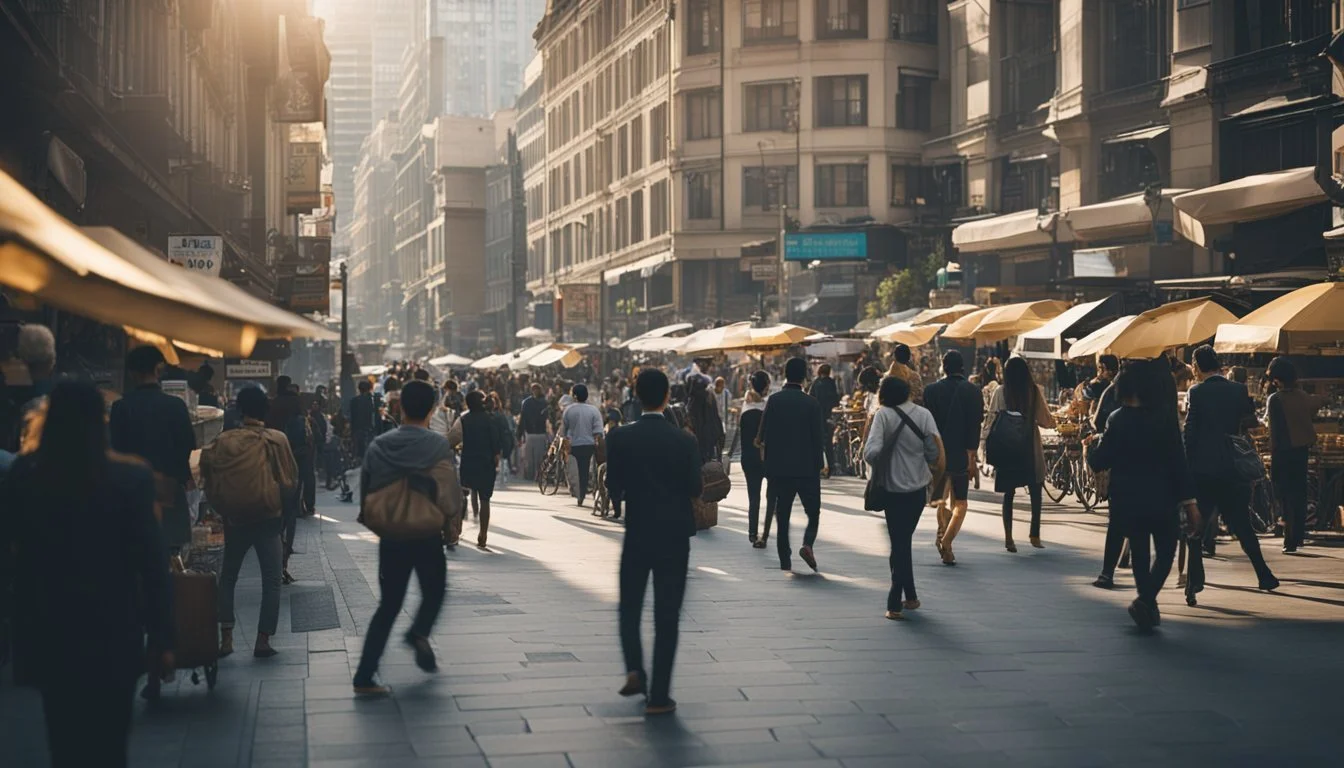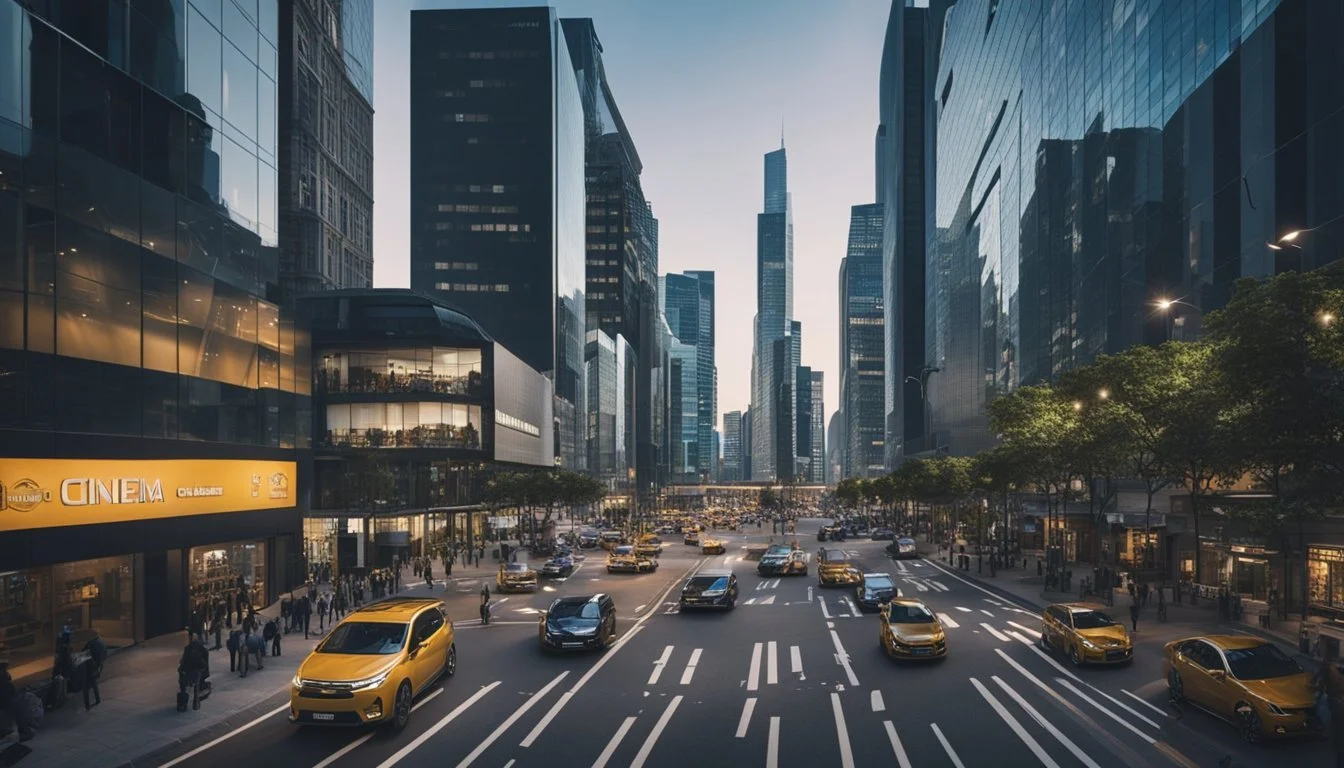The Power of Cinéma Vérité
Authentic Storytelling in Film
Cinéma Vérité, often referred to as "truthful cinema," revolutionizes the documentary filmmaking landscape by focusing on capturing reality as it happens. Developed in the late 1950s and early 1960s, this technique invites viewers to experience unmediated and unscripted moments, providing a raw and authentic glimpse into the subject's world. The power of Cinéma Vérité lies in its ability to unveil the hidden nuances of everyday life, creating a profound connection between the audience and the on-screen narrative.
By using techniques such as on-location shooting and employing non-professional actors, Cinéma Vérité filmmakers strip away the artifice often associated with traditional documentaries. This approach ensures that what is captured on film remains as close to the truth as possible, allowing the audience to engage deeply with the material. The focus on authenticity and the unfiltered representation of reality distinguishes Cinéma Vérité from other documentary styles.
In today's media landscape, where manufactured reality often overshadows genuine experiences, Cinéma Vérité provides a refreshing contrast. This method not only offers a true reflection of society but also empowers both the filmmaker and the viewer to explore the intricacies of human behavior and social dynamics without interference. The enduring appeal of Cinéma Vérité underscores its effectiveness in conveying stories that resonate on a deeply personal level.
Origins of Cinéma Vérité
Cinéma vérité, emerging in the late 1950s and early 1960s, revolutionized documentary filmmaking with its authentic portrayal of everyday life. This movement was shaped by the historical context, the influence of Italian Neorealism, and key pioneers who crafted seminal films.
Historical Context
Cinéma vérité arose in a time of social and political upheaval. The 1960s were marked by civil rights movements, anti-war protests, and a general push against traditional norms. Filmmakers sought to reflect this reality by capturing unfiltered, real-life events.
Advancements in technology played a crucial role. Lightweight handheld cameras and portable sound equipment made it feasible to film outside studios. This allowed directors to be more spontaneous and adaptive, essential traits of cinéma vérité.
Influence of Neorealism
Italian Neorealism deeply influenced cinéma vérité. Post-World War II, Italian directors like Roberto Rossellini and Vittorio De Sica focused on the lives of ordinary people. Their films often featured non-professional actors and on-location shooting, aiming for authenticity.
Neorealism's emphasis on social issues and humanism resonated with cinéma vérité filmmakers. They adopted similar techniques, prioritizing real-world interactions over scripted narratives. This approach highlighted the raw, unembellished facets of human experience.
Key Pioneers and Films
Jean Rouch and Edgar Morin were pivotal in shaping cinéma vérité. Their film Chronicle of a Summer (1961) is considered a cornerstone of the movement. The film combined interviews and observational footage, presenting a candid view of Parisian life.
Key Films and Figures:
Chronique d'un Été (1961) by Jean Rouch and Edgar Morin
Primary (1960) by Robert Drew: Documented John F. Kennedy's primary campaign
Don't Look Back (1967) by D.A. Pennebaker: Followed Bob Dylan's 1965 tour in England
These works exemplified the cinéma vérité ethos, using the camera as a tool to uncover deeper truths and societal insights.
Cinéma vérité's commitment to realism and its innovative techniques have left a lasting legacy in documentary filmmaking. It allowed audiences to witness life unmediated, bringing them closer to the complexities of human existence.
Defining Cinéma Vérité
Cinéma Vérité, also known as "truthful cinema," emerged in the 1960s and is characterized by its realistic portrayal of everyday life, avoiding scripted dialogue and contrived scenarios. This style relies on observational techniques and intimate access to the subjects.
Conceptual Foundations
Cinéma Vérité was inspired by Dziga Vertov’s theory of Kino-Pravda, advocating for an unfiltered depiction of life. French filmmakers Edgar Morin and Jean Rouch further developed this idea, emphasizing the importance of capturing truth without interference.
Key Elements:
Real interactions
Authentic dialogue
Unscripted scenarios
Filmmakers sought to present the raw, unembellished reality, challenging traditional documentary techniques that often relied heavily on narration and staging.
Cinéma Vérité vs. Direct Cinema
Cinéma Vérité and Direct Cinema both aim to capture reality, but key differences exist. Cinéma Vérité often involves interaction between the filmmaker and subjects, sometimes even provoking situations to reveal deeper truths.
In contrast, Direct Cinema strives for complete observational objectivity, minimizing the filmmaker's presence.
Aspect Cinéma Vérité Direct Cinema Interaction Active, participatory Passive, observational Filmmaker's Role Visible, sometimes provocative Invisible, non-intrusive Objective Reveal hidden truths through interaction Capture reality as it unfolds naturally
Techniques and Aesthetics
Cinéma Vérité employs a range of techniques designed to enhance the sense of reality:
Handheld Cameras: Flexible and mobile, creating a dynamic and intimate feel.
Natural Lighting: Avoiding artificial setups to maintain authenticity.
Sync Sound: Dialogue recorded on location, preserving the spontaneity of real conversation.
The aesthetic favors minimal editing to retain the genuine flow of events, making the audience feel as though they are witnessing reality firsthand. These methods collectively underscore the movement’s commitment to truthful filmmaking, setting it apart from other documentary styles.
Ethical Considerations
Cinéma vérité presents unique ethical challenges related to the interaction between filmmakers and subjects, maintaining authenticity without manipulation, and the potential impacts on viewers.
Subject Interaction
Filmmakers must navigate the delicate balance between capturing candid moments and respecting the dignity of their subjects. Consent is crucial, ensuring participants understand the scope and potential impact of the film.
Probing questions and persistent presence can intrude on personal space, making ethical conduct vital. Filmmakers must remain sensitive to the subject’s comfort and well-being, minimizing any exploitation or discomfort. Clear communication and boundaries safeguard this trust.
Authenticity vs. Manipulation
Maintaining authenticity in cinéma vérité involves a commitment to unaltered reality. The temptation to stage scenes or influence events can undermine this authenticity.
Editing choices and selective framing also pose risks of manipulation. The line between truthful representation and artistic interpretation can blur, making transparency in the process essential. Filmmakers should aim to portray events honestly, resisting the urge to enhance the narrative artificially.
Viewer Impact
The raw and unfiltered nature of cinéma vérité can deeply affect viewers. Exposing audiences to unvarnished realities demands consideration of the psychological impact.
Potential graphic content or sensitive topics must be handled with care to avoid sensationalism or desensitization. Providing context and warnings where necessary helps to prepare viewers, maintaining an ethical stance while delivering truth.
Technological Advancements
The advancements in camera equipment and digital technology have been pivotal in shaping cinéma vérité. These developments have influenced both the production process and the quality of documentary films.
Evolution of Equipment
In the late 1950s and early 1960s, the advent of portable 16-mm cameras and synchronous sound recorders revolutionized documentary filmmaking. Portability allowed filmmakers to capture events and interactions in real-time, providing an unfiltered view of reality.
Before this, film equipment was cumbersome, limiting the ability to film on the move. The synchronization of sound and image was another breakthrough. Filmmakers could now record extended sequences without interruption, ensuring authenticity. Single takes became longer, more dynamic, and less obtrusive, facilitating the goal of depicting reality as it happens.
Impact of Digital Technology
Digital technology has further advanced the field by making high-quality equipment more affordable and accessible. Lightweight digital cameras replaced their analog predecessors, offering superior storage capacity and ease of use. This shift allowed a broader range of filmmakers to explore cinéma vérité.
Additionally, digital editing software enabled more efficient post-production processes. Editors can now seamlessly integrate footage, enhancing storytelling without sacrificing the raw, authentic feel of cinéma vérité. These tools have democratized the medium, allowing even small-budget productions to achieve high technical standards while maintaining the genre's core principles.
Cinéma Vérité in Practice
Cinéma Vérité is a documentary filmmaking technique that emphasizes capturing reality and truth. This approach relies on minimal interference from the director, creating an authentic viewing experience.
Documentary Filmmaking
In documentary filmmaking, Cinéma Vérité is used to present real-life situations without scripting or directing. The filmmaker's role is primarily that of an observer. By not intervening, they allow events to happen naturally, presenting life as it is.
This technique often uses handheld cameras and natural lighting. It avoids rehearsals, ensuring the spontaneity of human interactions is preserved. The goal is to create an honest portrayal of the subjects' lives and surroundings.
Modern Variations
Modern variations of Cinéma Vérité have integrated digital technologies. Filmmakers now use lightweight digital cameras, which are less intrusive and more flexible. This advancement has made it easier to capture intimate and candid moments.
Additionally, social media platforms offer new ways to distribute and showcase Cinéma Vérité films. The essence remains, focusing on truthful and unscripted storytelling, but the tools and methods have evolved, providing new avenues for filmmakers.
Case Studies
Several notable films exemplify Cinéma Vérité, each highlighting different aspects of this technique. For example, "Chronicle of a Summer" by Jean Rouch and Edgar Morin is a classic, known for its raw portrayal of personal interviews and daily life in Paris.
Another example is "Primary," directed by Robert Drew, which follows John F. Kennedy's primary campaign in 1960. Its use of close-up shots and real-time events brings an immediacy and intimacy to the political process. These films demonstrate how Cinéma Vérité captures authenticity in various contexts and historical moments.
Cultural and Social Relevance
Cinéma vérité emerged as a groundbreaking movement that reshaped documentary filmmaking, capturing authentic segments of life with minimal interference.
Global Movements
Cinéma vérité originated in France during the late 1950s and early 1960s. It quickly spread to other parts of the world, influencing filmmakers globally.
Countries like the United States adopted the style, seen in works like "Primary" by Robert Drew. This technique enriched various national cinemas by promoting a more realistic and unfiltered perspective.
Filmmakers sought to abandon staged setups, opting instead for spontaneous, real-life situations. This approach garnered attention for its raw and honest depictions. It aimed to expose deeper cultural and social truths, resonating with audiences worldwide.
Representation of Reality
Cinéma vérité prides itself on presenting the unembellished truth. By avoiding scripted dialogues and rehearsed actions, it offers viewers an unobstructed view of real-life events.
Early practitioners like Jean Rouch and Edgar Morin emphasized the importance of capturing genuine emotions and interactions. They utilized hand-held cameras and portable sound equipment to achieve this goal.
This method highlighted societal issues and day-to-day human experiences. In doing so, it provided a voice to the often overlooked or marginalized segments of society. The style's emphasis on reality has had a lasting impact on the way documentaries and even narrative films are crafted today.
Critiques and Analysis
Cinéma vérité has sparked varied reactions from both academia and the film industry. Scholars often examine its methods, while industry professionals have either embraced or criticized its realist approach.
Academic Perspectives
Academics analyze cinéma vérité's value and methodology. Some praise its authentic representation of real life, noting the minimal interference by filmmakers. They argue that this technique allows for an unfiltered truth, making it a rich subject for studies on realism and authenticity in cinema.
Other scholars critique cinéma vérité for its perceived lack of objectivity. They argue that the filmmaker's presence, even if minimal, can still influence the subject matter and audience perception. This raises questions about the true nature of "truth" in documentary filmmaking.
Industry Response
The industry response to cinéma vérité has been mixed. Some filmmakers champion its raw, unscripted style, crediting it with bringing a greater sense of realism and immediacy to documentaries. This approach has influenced various genres, encouraging a more immersive viewer experience.
However, others in the industry criticize it for potentially compromising storytelling. They argue that the focus on realism may lead to less engaging narratives, detracting from the emotional impact that more structured documentaries can provide. This debate continues to shape opinions on cinéma vérité within the filmmaking community.



